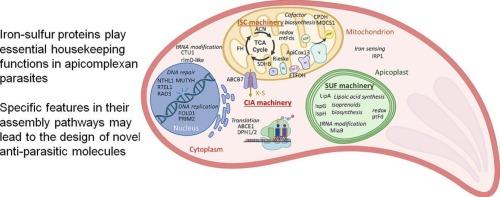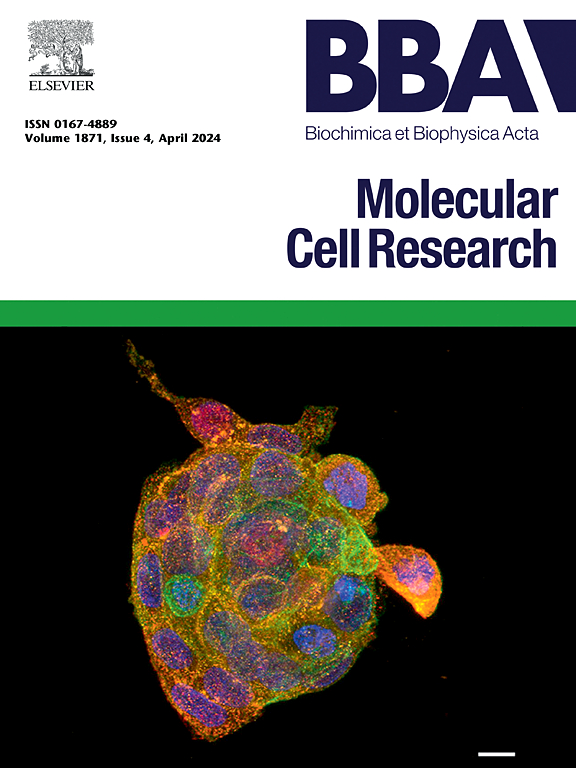Iron‑sulfur cluster biogenesis and function in Apicomplexa parasites
IF 4.6
2区 生物学
Q1 BIOCHEMISTRY & MOLECULAR BIOLOGY
Biochimica et biophysica acta. Molecular cell research
Pub Date : 2024-11-14
DOI:10.1016/j.bbamcr.2024.119876
引用次数: 0
Abstract
Iron‑sulfur cluster are ubiquitous and ancient protein cofactors that support a wide array of essential cellular functions. In eukaryotes, their assembly requires specific and dedicated machineries in each subcellular compartment. Apicomplexans are parasitic protists that are collectively responsible for a significant burden on the health of humans and other animals, and most of them harbor two organelles of endosymbiotic origin: a mitochondrion, and a plastid of high metabolic importance called the apicoplast. Consequently, apicomplexan parasites have distinct iron‑sulfur cluster assembly machineries located to their endosymbiotic organelles, as well as a cytosolic pathway. Recent findings have not only shown the importance of iron‑sulfur cluster assembly for the fitness of these parasites, but also highlighted parasite-specific features that may be promising for the development of targeted anti-parasitic strategies.

寄生虫铁硫簇的生物生成和功能
铁硫簇是无处不在的古老蛋白质辅助因子,支持着一系列重要的细胞功能。在真核生物中,它们的组装需要每个亚细胞区室中特定的专用机制。类囊体是一种寄生原生动物,对人类和其他动物的健康造成了巨大的负担,其中大多数寄生原生动物都有两个内共生细胞器:线粒体和被称为类囊体的具有高度代谢重要性的质体。因此, apicomplexan 寄生虫在其内共生细胞器中具有独特的铁硫簇组装机制,同时也有一条胞质途径。最近的研究结果不仅显示了铁硫簇组装对这些寄生虫健康的重要性,还突出了寄生虫的特异性,这些特异性可能有助于开发有针对性的抗寄生虫策略。
本文章由计算机程序翻译,如有差异,请以英文原文为准。
求助全文
约1分钟内获得全文
求助全文
来源期刊
CiteScore
10.00
自引率
2.00%
发文量
151
审稿时长
44 days
期刊介绍:
BBA Molecular Cell Research focuses on understanding the mechanisms of cellular processes at the molecular level. These include aspects of cellular signaling, signal transduction, cell cycle, apoptosis, intracellular trafficking, secretory and endocytic pathways, biogenesis of cell organelles, cytoskeletal structures, cellular interactions, cell/tissue differentiation and cellular enzymology. Also included are studies at the interface between Cell Biology and Biophysics which apply for example novel imaging methods for characterizing cellular processes.

 求助内容:
求助内容: 应助结果提醒方式:
应助结果提醒方式:


